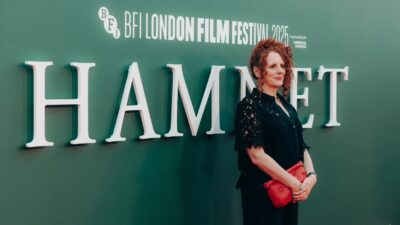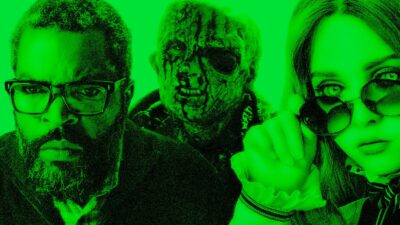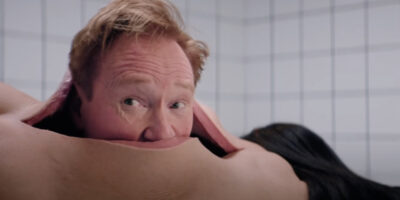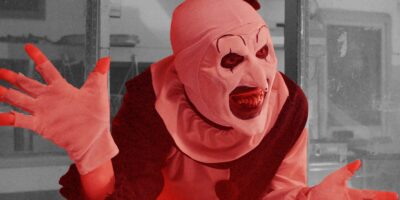There’s a lot of crossover between Letterboxd over here at Crossfader. For those who don’t already know, Letterboxd is a vibrant, online film community where users can rate, review, log, and otherwise discuss their opinions on any and every film imaginable. It’s a fantastic resource to discover movies you otherwise would have never even heard of, or just a stellar database for your existence and journey as a fan of the medium. But recently, Letterboxd has enjoyed a bit more cultural cache with Hoop-Tober, a seasonal, horror-themed film challenge that has made its way to Reddit and spread across the internet from there. Started by celebrity user Cinemonster, each year new rules and parameters are established to guide you on your way to picking 31 horror films to watch during the Halloween season. You can find this year’s rules here, if you’re interested. In any case, several of our contributors participated, and since it gives us a chance to write about standout genre picks that we normally wouldn’t get to cover otherwise, we thought we’d give you a tour of what we enjoyed the most from Hoop-Tober 4.0.

BLACK CHRISTMAS
Director: Bob Clark
Year: 1974
As I suppose is the nature of the beast, pursuing these kinds of movie challenges leaves you a little battered and bruised at the end. Due to over-exposure and a sense of exhaustion, there are unavoidable diminishing returns, and many of the most hyped entries can come across as mildly disappointing. That’s why BLACK CHRISTMAS snuck up on me as my favorite film of Hoop-Tober, as it’s relatively unassuming and has at least some small foothold in the cultural consciousness—many know it exists, although far fewer have actually seen it. Telling the tale of a sorority house terrified by a deranged killer during the holiday season, BLACK CHRISTMAS is ingeniously effective for several reasons. First of all, it’s as equally proficient as a mystery-thriller as it is a proto-slasher, as a large portion of the narrative involves the police and sorority girls forced to work together and overcome their respective incompetencies in order to get to the bottom of the seasonal slayings. In addition, considering the time in which it was made, it subverts horror tropes before they were established and aggressively codified in the genre heyday that was to follow; the girls aren’t punished for their sexuality, the “good one” is the first one to die, and the true identity of the killer is never exposed apart from the fact that his name is “Billy,” his backstory and motivation only partially delivered through utterly unnerving phone calls to the sorority house. On the topic of the phone calls: holy shit! Somewhere between the dialogue and the acting they managed to make such an innocuous horror trope one of the most disturbing things ever committed to screen. Deftly commanding an unrepentant nihilism and acerbic take on time-honored traditions, a notable layer of humor that deploys its handful of laughs at the perfect moments, and a stellar soundtrack to boot, BLACK CHRISTMAS is well worth the watch this upcoming Christmas season if you missed it for Halloween. [Thomas Seraydarian]

THE BLOB
Director: Chuck Russell
Year: 1988
Like the titular monster itself, THE BLOB is full of surprises. You don’t expect much from the cinematic equivalent of getting slimed at the Kid’s Choice Awards, and neither do the inhabitants of the sleepy ski resort town where the Blob makes landfall. The citizens are instantly endearing, so it’s shocking how quickly they begin to get, uh, blobbed, not to mention who gets removed. There’s also the nature of how the Blob kills, which come in some wildly inventive and horrific methods for what is essentially an inert puddle of goop. The unpredictability of the plot and the creature catalyzing it constantly keep the viewer on their toes. It’s hard not to mention THE THING in comparison, but where John Carpenter’s monster cannot be surpassed in creative morbidity, THE BLOB is unimpeachable in its on-screen realization. The Blob is rendered in stop motion, but the genius decision to place a pulsating strobe light within its mass causes its movements to actually look fluid. The end result is a technical marvel, proving that even the most superficially lazy designs can be brilliant when executed properly. THE BLOB is wickedly funny, sadistically violent, and surprisingly smart. If you’re looking for an endlessly entertaining headline for your next B-movie night, THE BLOB cannot be beat. [Ed Dutcher]

GHOSTWATCH
Director: Lesley Manning
Year: 1992
One of the greatest magic tricks ever accomplished, GHOSTWATCH is an ultimate embodiment of “trick-or-treat,” delivering both in equal mounds and astounding spades. Originally aired on BBC1 in 1992, GHOSTWATCH is a fictitious Halloween special manufactured to look like a live-television broadcast hosted by beloved British talk show host, Michael Parkinson, and assorted real-life members of the BBC1 news crew as they cover the potential haunting of a single mother and her daughters. During its first 50 minutes, I found myself attending to chores around my apartment as it played in the background. I know, I know: a sacrilegious manner in which to watch movies, how dare I! But that is the function by design! GHOSTWATCH is a moment-by-moment recreation of a live special, with all the slow stretches of moments forced out of nothing to viewers calling in and delivering non-information and hosts stumbling to smooth out the kinks of dead air. Intensely procedural and indelibly faithful—it’s cute! But then—hold up, what was that in the window’s reflection? Was that a crew member? If it was, he sure left the room quick. Wait, why is the daughter suddenly yelling bloody murder? I quickly set aside the distractions, my ass firmly hunkered down on the couch. There was no moving me as I waited to see how bad things could get for these live-reporters—or if anything would happen at all. I was hooked in and falling for the very trick the film was pulling: the perfection at which this captures our natural attentiveness to a live car-chase or breaking news bulletins that exploit our animalistic desires to see raw, spilt blood is eerie. It is entirely possible to watch the entirety of GHOSTWATCH and never see a ghost, yet the sensation of waiting to see it, of wondering if you will ever see it is overwhelming. The special, so finely crafted by director Lesley Manning and horror writer Stephen Volk, knowingly feeds into our base curiosities and founds its fears in our attentiveness. While many will wish to have seen this live when it first broadcasted, the frights are so subtle and unsettling that, somehow, a film so of-the-moment scares just as well 25 years later. Currently available to watch on Shudder, a truly wonderful streaming service dedicated to cult and horror cinema, I reckon a month’s subscription is worth it just to view GHOSTWATCH and GHOSTWATCH alone—I have a new Halloween tradition and I’m certain you will, too. [Kevin Cookman]

HOUSE
Director: Nobuhiko Obayashi
Year: 1977
I watch an awful lot of horror, Hoop-Tober or not, but there are a handful of spooky flicks I make an effort to watch every Halloween season. Now I love me some NIGHTMARE ON ELM STREET and TEXAS CHAINSAW MASSACRE, but I have a real soft spot for the goofy over the gory, which is why schlockers like ERNEST SCARED STUPID and WOLFCOP take a front row seat. But of all my annual offerings, there is one in particular that is both decidedly the least scary and the most ridiculous, and this year I was lucky enough to catch it on the big screen. Nobuhiko Obayashi’s HOUSE is the wildest, most head-scratchingest, downright most joyous viewing experience you are likely to ever have, and I recently had the chance to share that with a few dozen others at the good ol’ Frida Cinema. If you’re unfamiliar, HOUSE (or HAUSU, as it is commonly known), the first feature film of revered director, Nobuhiko Obayashi, is the apex of cult cinema. Prior to HOUSE, Obayashi had cut his teeth with experimental films and had worked as a commercial director. (If you’ve ever seen a Japanese commercial, you may have a better idea of what’s in store for you.) After the unprecedented success of foreign horror films such as JAWS, Obayashi was approached by Toho (the legendary studio behind the GODZILLA franchise) to helm a picture in that same vein. Perhaps inexperienced, and suffering from a bit of writer’s block, he picked his young daughter’s brain, asking her to describe her fears, as childlike and illogical as they may have been. And it would be those fears, filtered through the lens of a surrealist, experimental filmmaker, that would go on to form the backbone of the film’s script. The result was, well, HOUSE. I won’t spoil it for any of you who haven’t had the opportunity to see this absurd, comically inept (or is it self-aware?), truly magical film, but suffice it to say there is nothing else quite like it, and seeing it in all its glory on the big screen was one of the absolute highlights of my Hoop-Tober. [Joseph Simpson]

HUSH… HUSH, SWEET CHARLOTTE
Director: Robert Aldrich
Year: 1964
I will readily admit that much of my October was spent playing catch up on films I was embarrassed to have never seen. As such, I will avoid the obvious recommendations of ARMY OF DARKNESS, THEY LIVE, and, of course, THE TEXAS CHAIN SAW MASSACRE (I know, I know, It’s beyond me how I avoided these classics for so long), but one small film caught me off guard in particular; HUSH… HUSH, SWEET CHARLOTTE, Robert Aldrich’s companion piece to his 1962 classic, WHATEVER HAPPENED TO BABY JANE. How had I not seen this until now? Bette Davis and Olivia de Havilland perform with incredible range, and the cinematic complexity of Aldrich’s macabre narrative is unquestionably staggering. Sure, with the passage of time, this has morphed into a rather sadistic mystery-thriller, but it’s amazing how well this still spooks me through clever misdirection. There is a pristine quality to the writing here that I’d love to see more of in modern horror. It’s almost a soap opera in its overtly tragedian dramatics, but it’s all too polished to be straight camp. There’s a tangible elevation that really helps the end product, and though its central character spends most of her time crying over a dead man, there is a beautiful, fully formed vulnerability to her. Highly recommended. [Sergio Zaciu]
















Comments